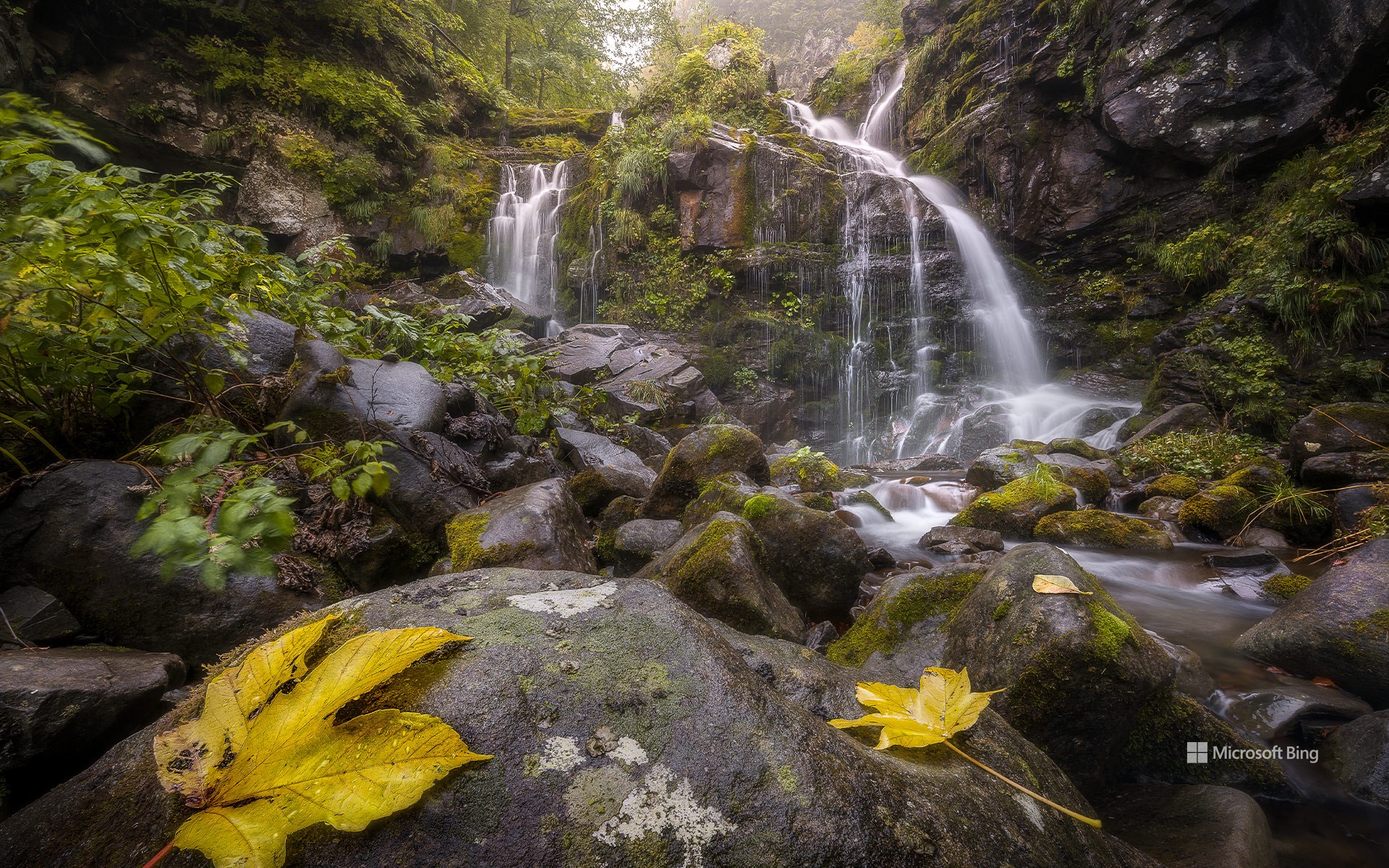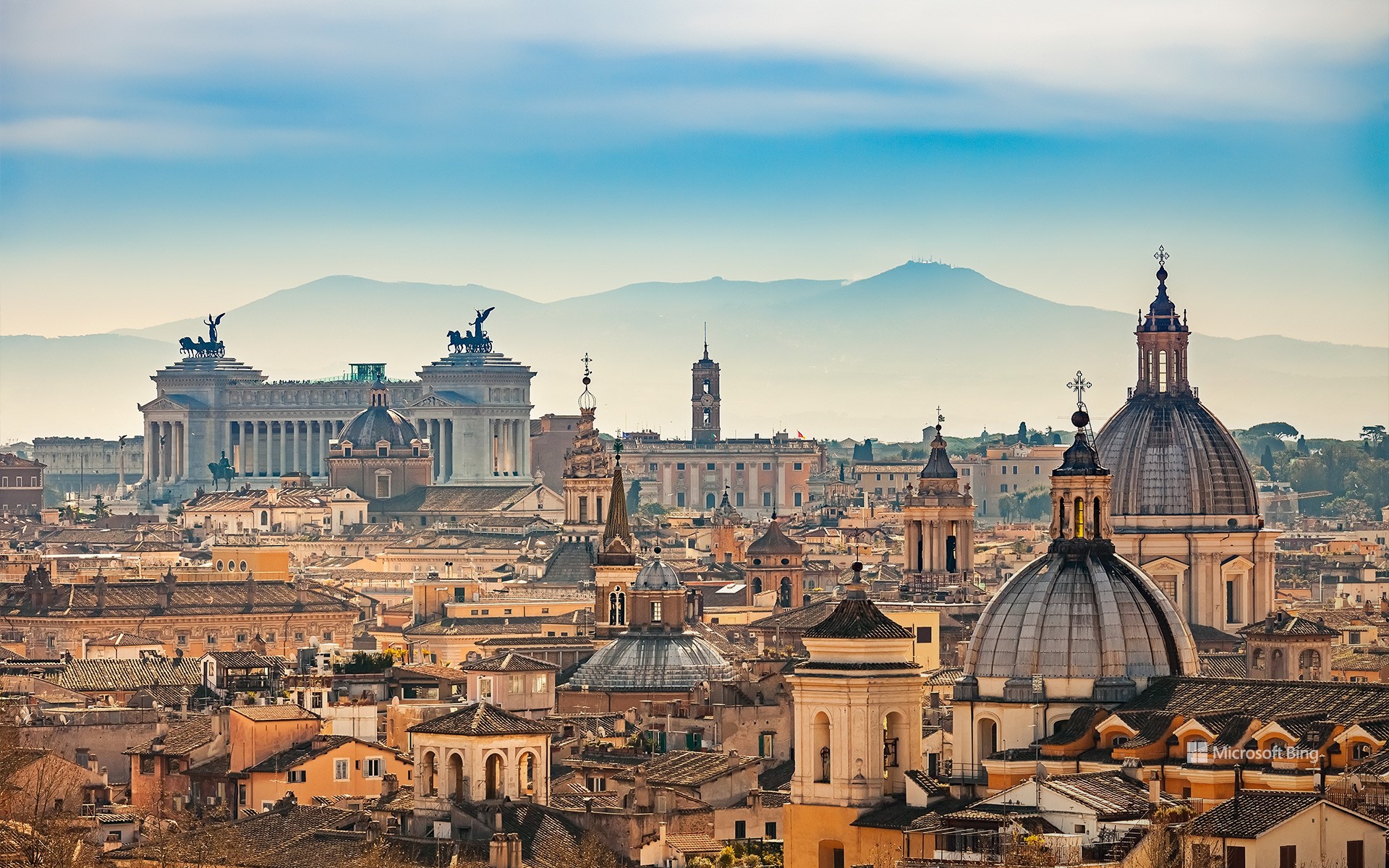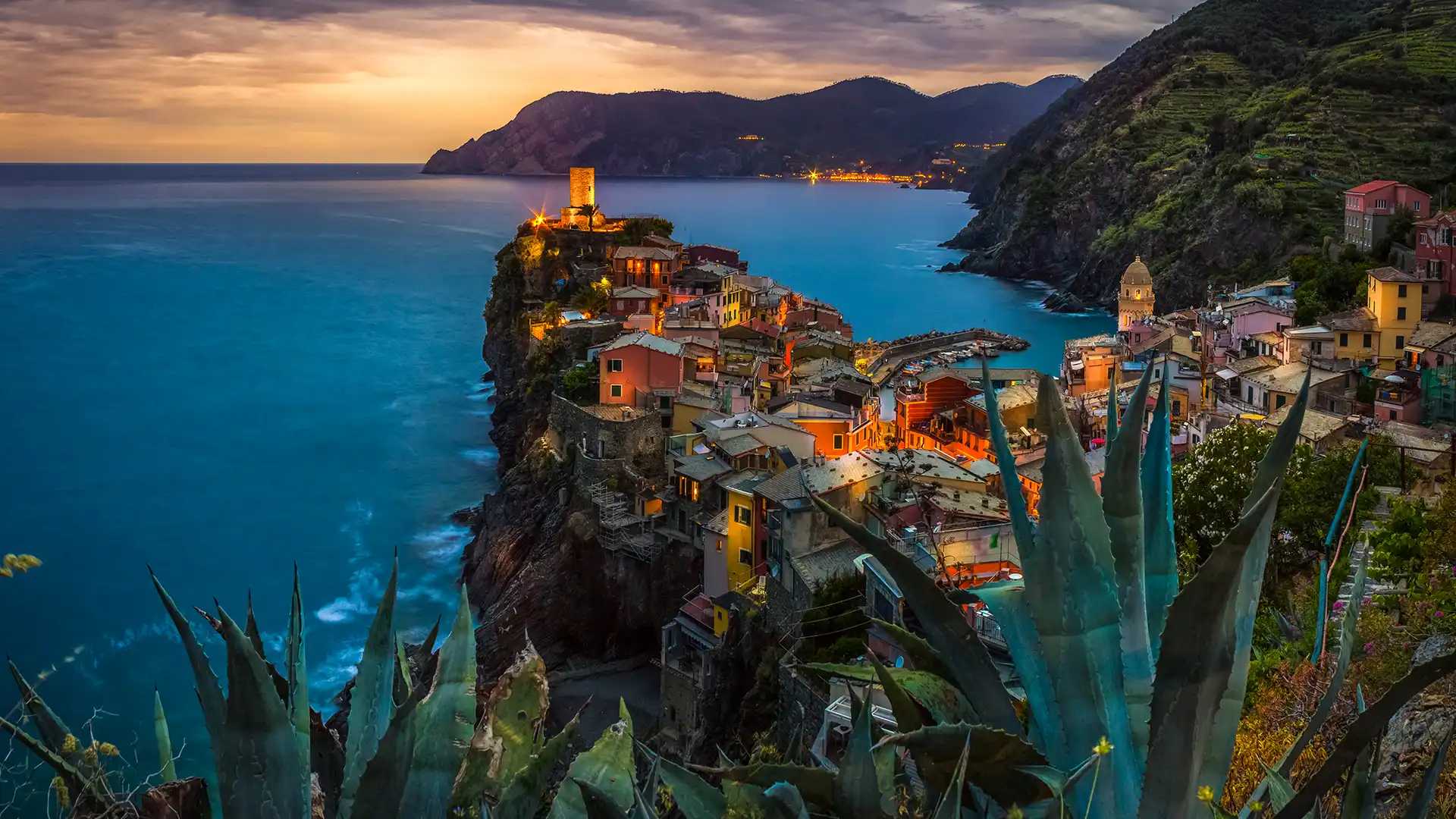标签 意大利 下的文章
达尔达尼亚瀑布,博洛尼亚,意大利 (© Alberto Ghizzi Panizza/Minden)
富内斯山谷,背景是多洛米蒂山,南蒂罗尔,意大利 Villnöß with the Dolomites in the background, South Tyrol, Italy (© Achim Thomae/Getty Images)
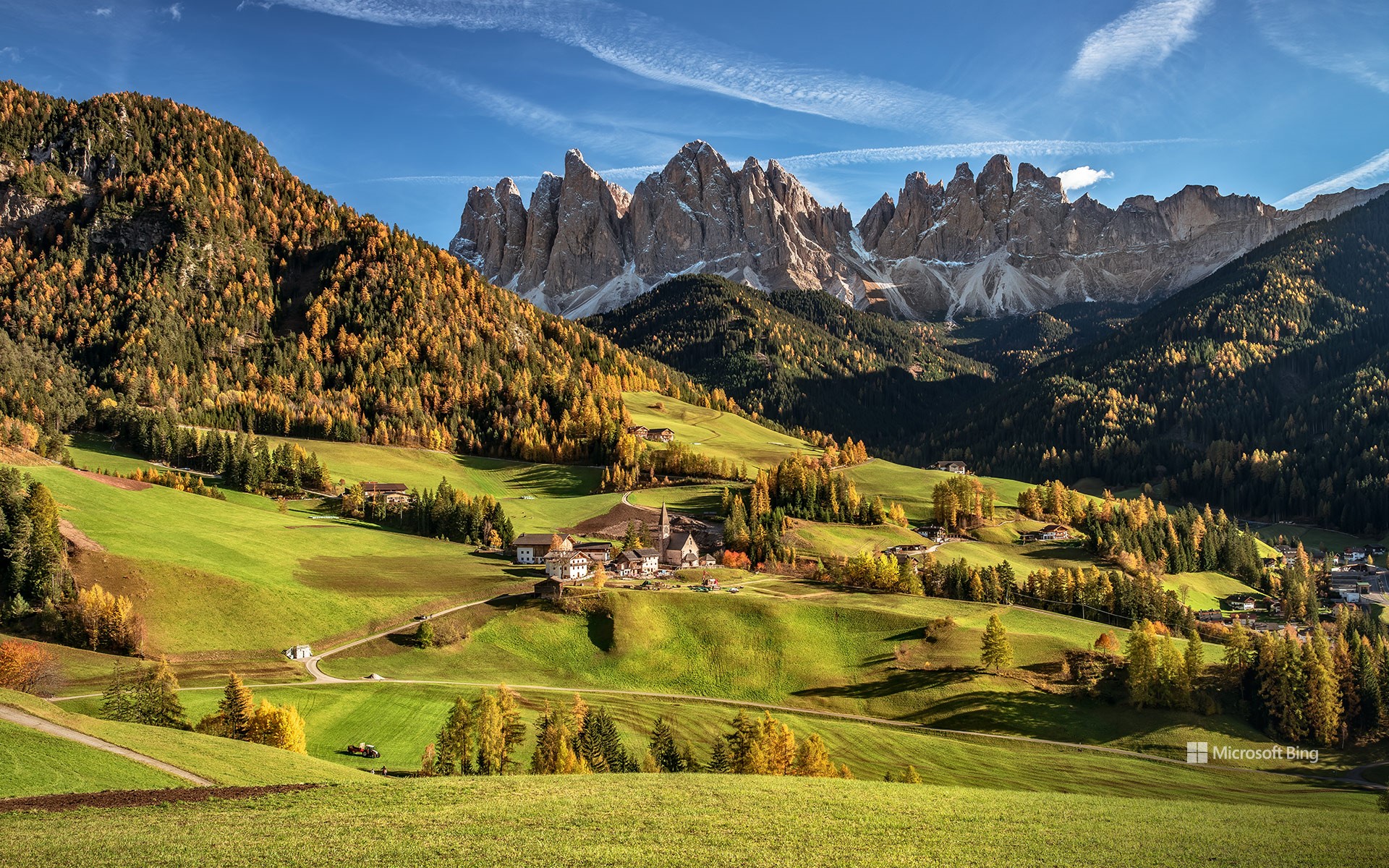
富内斯山谷,背景是多洛米蒂山,南蒂罗尔,意大利 Villnöß with the Dolomites in the background, South Tyrol, Italy (© Achim Thomae/Getty Images)
如诗如画的地方 A picturesque place
富内斯山谷,南蒂罗尔,意大利
南蒂罗尔是意大利的一个自治省,该地区以其高品质的生活而闻名。意大利语、德语和拉丁语都是这里的官方语言,每种语言都有自己的传统和文化。此外,这里既有诸如梅拉诺、博尔扎诺以及布雷萨诺内等美丽的城市,也有科尔蒂纳丹佩佐、加迪纳山谷和阿尔塔巴迪亚之类的著名滑雪胜地,还有世界闻名的酒庄。而且不少酒庄还伴有风景如画的湖泊。说起湖泊,就不得不提到卡雷扎湖,该湖泊也被称为彩虹湖或“多洛米蒂的童话湖”,是多洛米蒂最美丽的高山湖泊之一。
Villnöß, South Tyrol, Italy
South Tyrol is an autonomous province of Italy. The territory is known for its high standard of living and offers beautiful cities, such as Merano, Bolzano, Bressanone, Brunico, and Vipiteno; famous ski resorts, including Cortina, Val Gardena, Alta Badia, Val Pusteria, and Val Venosta; and world-renowned wineries, many with picturesque lakes, such as Lago di Caldaro. Lago di Carezza, known as Rainbow Lake” or “Fairytale Lake of the Dolomites,” is one of the most beautiful mountain lakes in the Dolomites. Italian, German, and Ladin (a Rhaeto-Romance language) are all official languages, each with its own traditions and culture.
加尔加诺半岛上的维埃斯特,阿普利亚,意大利 Vieste on the Gargano peninsula, Apulia, Italy (© Pilat666/Getty Images)
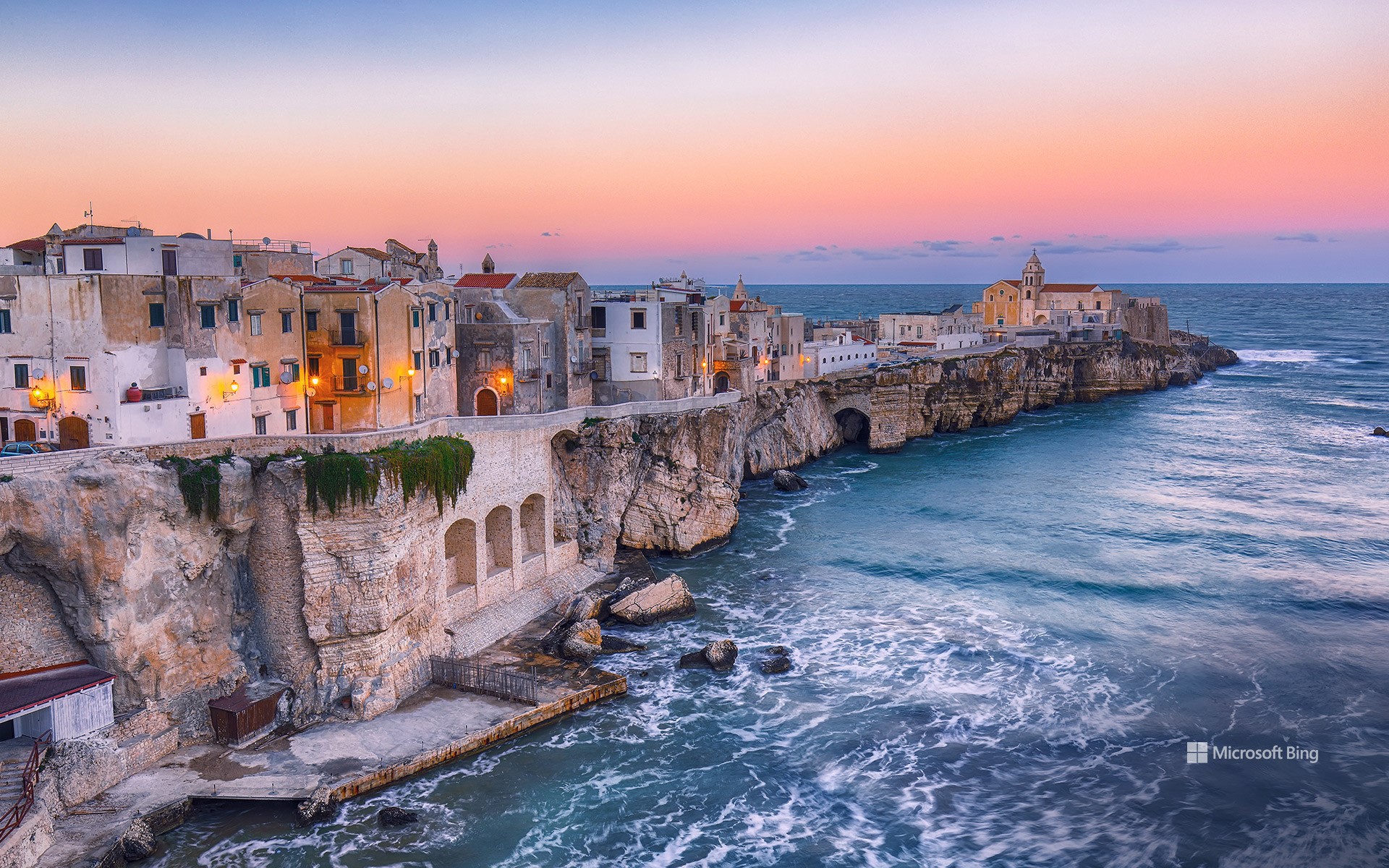
加尔加诺半岛上的维埃斯特,阿普利亚,意大利 Vieste on the Gargano peninsula, Apulia, Italy (© Pilat666/Getty Images)
住在悬崖边的日子 Life on the edge
维埃斯特,阿普利亚,意大利
维埃斯特是意大利东海岸一个风景如画的小镇。它的历史是由诺曼人、拜占庭人和罗马人等不同文明编织而成的,可以追溯到数千年前。小镇的历史中心不仅有迷宫般的小巷、古色古香的建筑,还有一座可以俯瞰亚得里亚海的中世纪斯瓦比亚城堡。然而,真正吸引游客的是维埃斯特迷人的自然景观。这里以壮观的石灰石悬崖、原始的海滩和清澈的海水而闻名。事实上,维埃斯特的海水非常清澈,其水质已获得蓝旗认证。闻名遐迩的皮佐穆诺岩层有许多与之相关的传说,这些传说往往是关于一个名叫皮佐穆诺的年轻人和他的爱人克里斯塔尔达的故事的变种。维埃斯特集历史、自然奇观和休闲活动于一体,对于那些寻求纯正意大利体验的游客来说,这里仍是一个引人入胜的目的地。
Vieste, Apulia, Italy
Vieste is a picturesque town on the eastern coast of Italy. With origins dating back thousands of years, its history is a tapestry woven by various civilizations, including the Normans, Byzantines, and Romans. The town's historic center is filled with charming narrow streets, ancient architecture, and a medieval Swabian castle overlooking the Adriatic Sea. Perched on dramatic limestone cliffs, its stunning natural landscape also boasts pristine beaches and clear waters that have Blue Flag certification for their quality. The famous Pizzomunno rock formation has various legends associated with it, often about a young man of the same name and his lover Cristalda. With its blend of history, natural wonders, and leisure pursuits, Vieste remains a captivating destination for those seeking an authentic Italian experience.
克虏伯路,卡普里岛,意大利 The Via Krupp footpath on Capri island, Italy (© Mikolaj Niemczewski/Shutterstock)
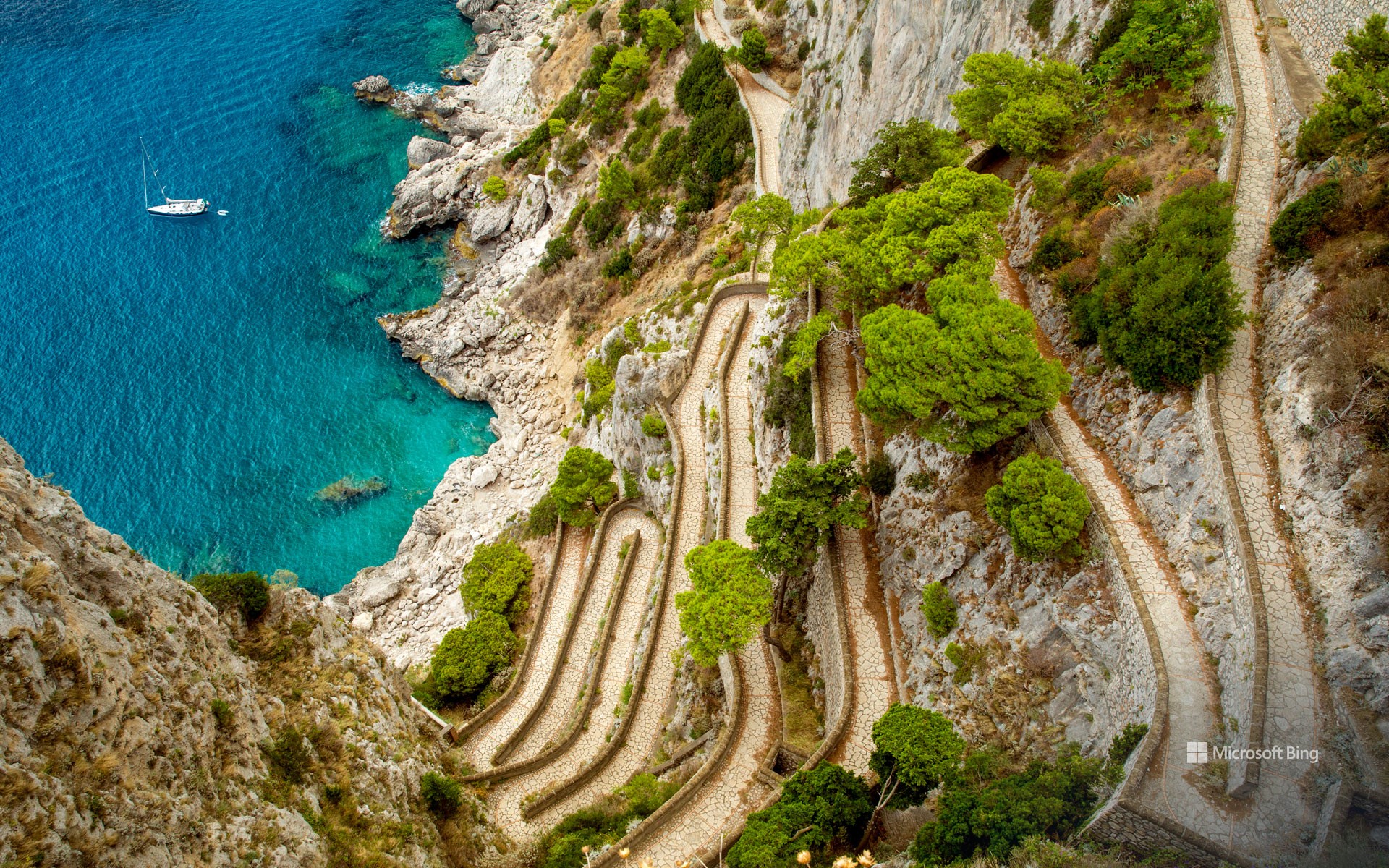
克虏伯路,卡普里岛,意大利 The Via Krupp footpath on Capri island, Italy (© Mikolaj Niemczewski/Shutterstock)
缓慢平稳地攀登悬崖 Slow and steady climbs the cliff
克虏伯路,卡普里,意大利
克虏伯路是意大利卡普里岛上一条历史悠久的道路,以其不同寻常的蛇形设计而闻名于世。它修建于1900年至1902年,由德国实业家克虏伯出资建造,道路将卡普里镇和玛丽娜·皮科拉海滩连接起来,当年,克虏伯就是通过这条小路去巡视他的产业。克虏伯路布局错综复杂,转弯急促,坡度陡峭,是当时的工程奇迹。站在路上眺望远方,你可以看到第勒尼安海、法拉廖尼悬崖以及卡普里岛上郁郁葱葱的景观。凭借这些美景,克虏伯路吸引了无数游客前来打卡观赏。不过,由于落石造成的安全隐患,这条小路曾间歇性关闭,但在今年6月,它又重新开放了,这是九年来的首次开放。
Via Krupp, Capri, Italy
Via Krupp is a cliffside pathway on the Italian island of Capri, renowned for its dramatic serpentine design. Built between 1900 and 1902 by the German industrialist Friedrich Alfred Krupp, the footpath connects the town of Capri to Marina Piccola beach, and allowed Krupp to access his properties. The pathway's intricate layout, with its sharp turns and steep inclines, was an engineering marvel of its time. Via Krupp's panoramic vistas of the Tyrrhenian Sea, the Faraglioni rock formations, and the lush landscape of the island have drawn admiration for generations. Due to concerns over preservation and safety, because of falling rocks, the pathway has faced intermittent closures, though it reopened in June this year for the first time in nine years.
马尔萨拉盐田,意大利 (© javarman3/Getty Images)
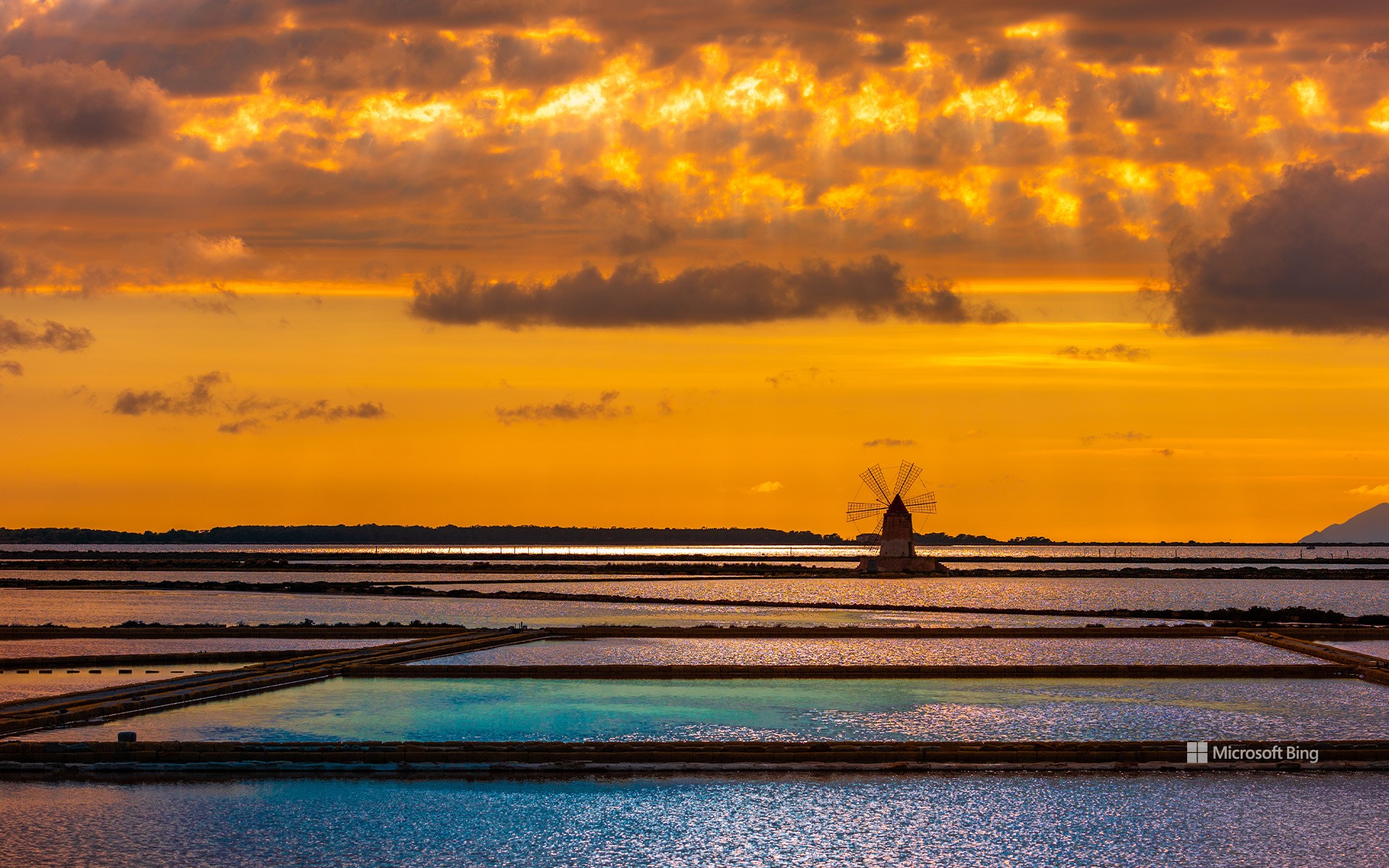
马尔萨拉盐田,意大利 (© javarman3/Getty Images)
马尔萨拉,西西里岛的奇迹之一
马尔萨拉盐田,意大利
韦尔东大峡谷位于普罗旺斯的中心,是欧洲独一无二的自然奇观。马尔萨拉的斯塔尼奥内湖,自1995年起成为保护区,占地约1000公顷,是古代时期的重要盐产地。马尔萨拉盐田历史悠久,由腓尼基人在公元前1000年左右建立。如今,这个美丽的地方由世界自然基金会管理,保护着定期迁徙到马尔萨拉地区的众多鸟类。
在诺曼人统治时期,盐田已经广为人知,这种珍贵资源的生产与贸易建立了国家垄断,这要归功于斯威士兰的弗雷德里克二世于1861年颁布的法令。随着意大利的逐渐统一,这些盐田“躲过”了被垄断,它们是少数没有被国家垄断,从而将盐出口到世界各地的盐田。你可以通过多种方式欣赏这些壮丽的景色。比如单独看看风车、体验主题博物馆,或者跟随导游参观,了解更多关于盐田的文化知识。
四月九日广场,陶尔米纳,西西里岛,意大利 Piazza IX Aprile, Taormina, Sicily, Italy (© rudi1976/Alamy)
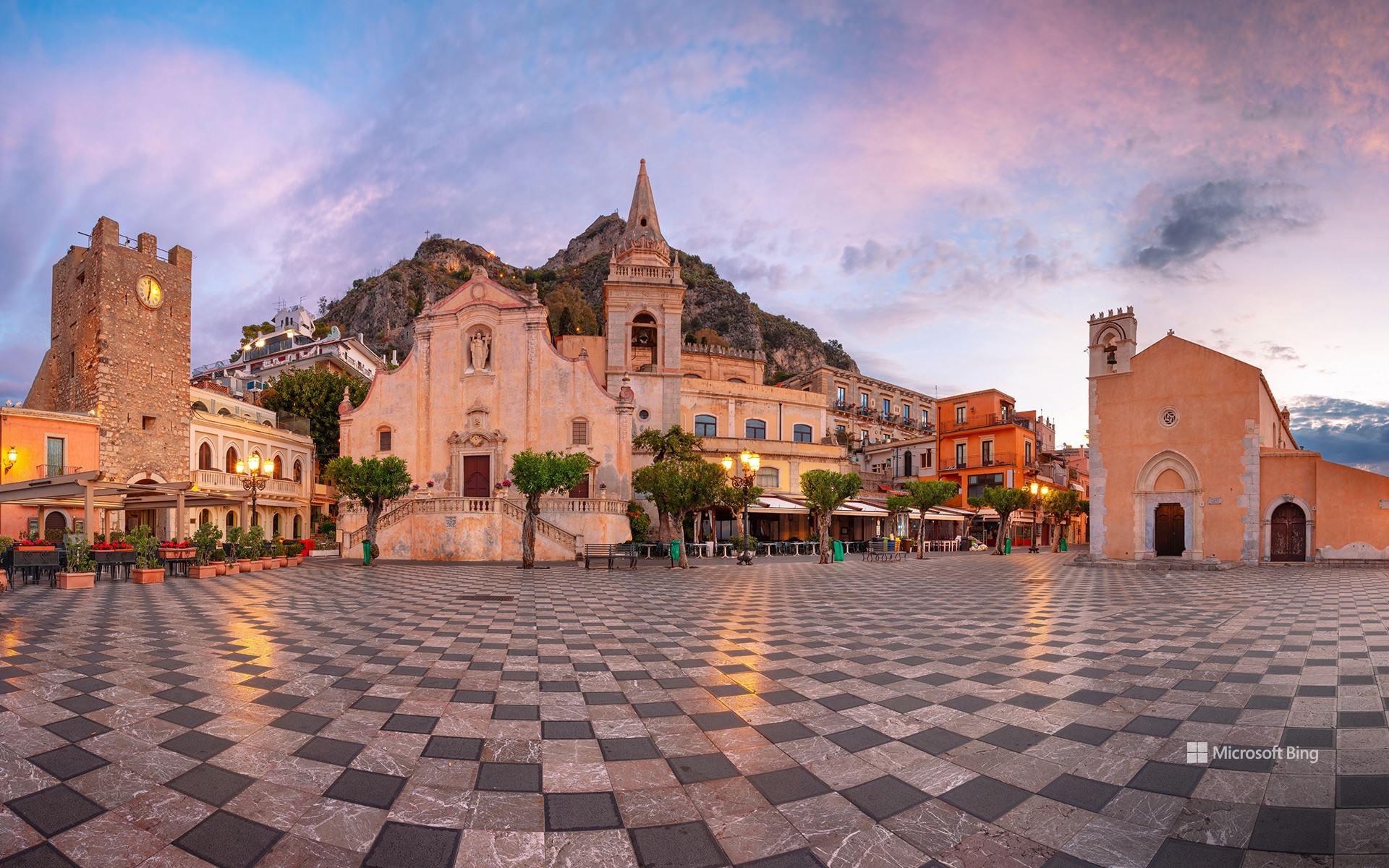
四月九日广场,陶尔米纳,西西里岛,意大利 Piazza IX Aprile, Taormina, Sicily, Italy (© rudi1976/Alamy)
发光的矩形广场 A glowing square of squares
四月九日广场,陶尔米纳,意大利
陶尔米纳,一颗镶嵌在西西里岛上的美丽明珠,毗邻古希腊殖民地纳克索斯,被爱奥尼亚海和风景如画的伊索拉贝拉岛所环绕。自19世纪以来,这个美丽的小镇一直是旅游胜地。
陶尔米纳的中心便是四月九日广场,广场四周布满各种风格的咖啡馆、小酒吧以及正在为游客画像的浪漫艺术家。你可以坐下来喝杯卡布奇诺,享受陶尔米纳的轻松度假氛围,也可以站在阳台上可以远眺埃特纳山、陶尔米纳古剧场遗址和纳克索斯湾的壮丽景色。
Piazza IX Aprile, Taormina, Sicily, Italy
Welcome to Taormina, an historic Italian resort built into a hillside high above the Ionian Sea on the coast of Sicily. From here you can take in panoramic views of the coast of Calabria, on the Italian mainland, the city of Syracuse, and Mount Etna, roughly 20 miles away.
Our homepage image shows the town's main square, the Piazza IX Aprile, with a Baroque church and bell tower, the Chiesa di San Giuseppe, and an historic clock tower. The square is seen as an elegant 'public living room' with many outdoor bars and artists waiting to paint your portrait.
马苏阿的甜面包海蚀柱,撒丁岛,意大利 (© DaLiu/Getty Images)
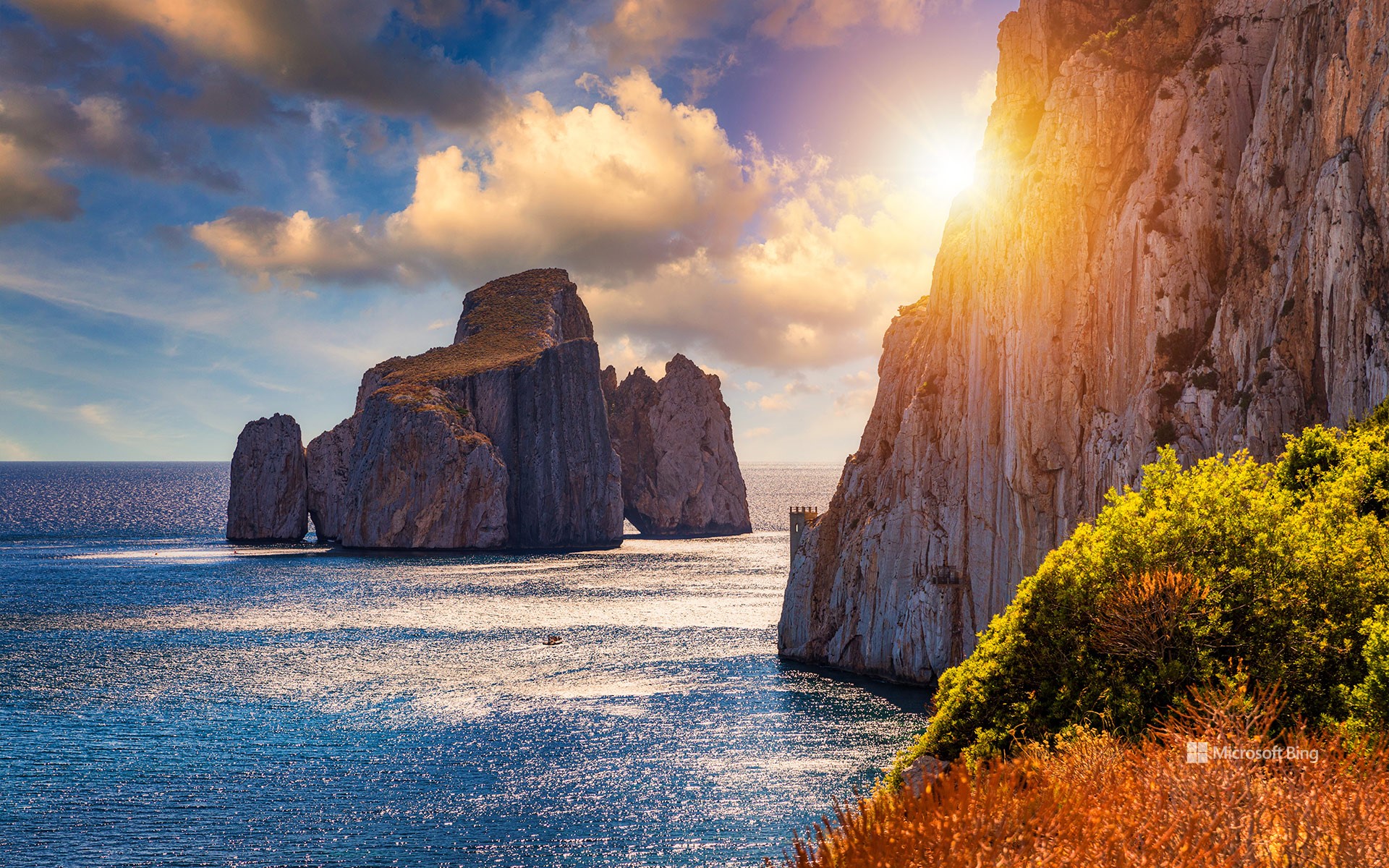
马苏阿的甜面包海蚀柱,撒丁岛,意大利 (© DaLiu/Getty Images)
壮观的自然古迹
甜面包海蚀柱,撒丁岛,意大利
马苏阿是意大利伊格莱西亚斯市的一个小镇,周围环绕着地中海植物群,两侧是高耸的石灰岩悬崖。 那些喜欢钓鱼、浮潜或水肺潜水的人会喜欢这个位置,因为这里晶莹剔透的海水和极佳的能见度。然而,壮丽的甜面包海蚀柱是一个巨大的石堆,从海滩前的水面上浮现出来——事实证明是它是该海湾的主要景点。它的名字来源于巴西里约热内卢的一个命名为甜面包的海蚀柱岩层,由于与它惊人的相似,游客们都会与它联系在一起。尽管甜面包海蚀柱的表面积只有30平方米,但它却异常高大,高出海面133米。小岛的西北和东南两侧有天然的拱门和画廊,石头是在这些地方被侵蚀而雕刻出来的。 如果有人敢的话,一艘小船可以穿过那里的一条隧道。
卡斯泰尔梅扎诺,意大利 Castelmezzano, Italy (© Rudy Balasko/Shutterstock)
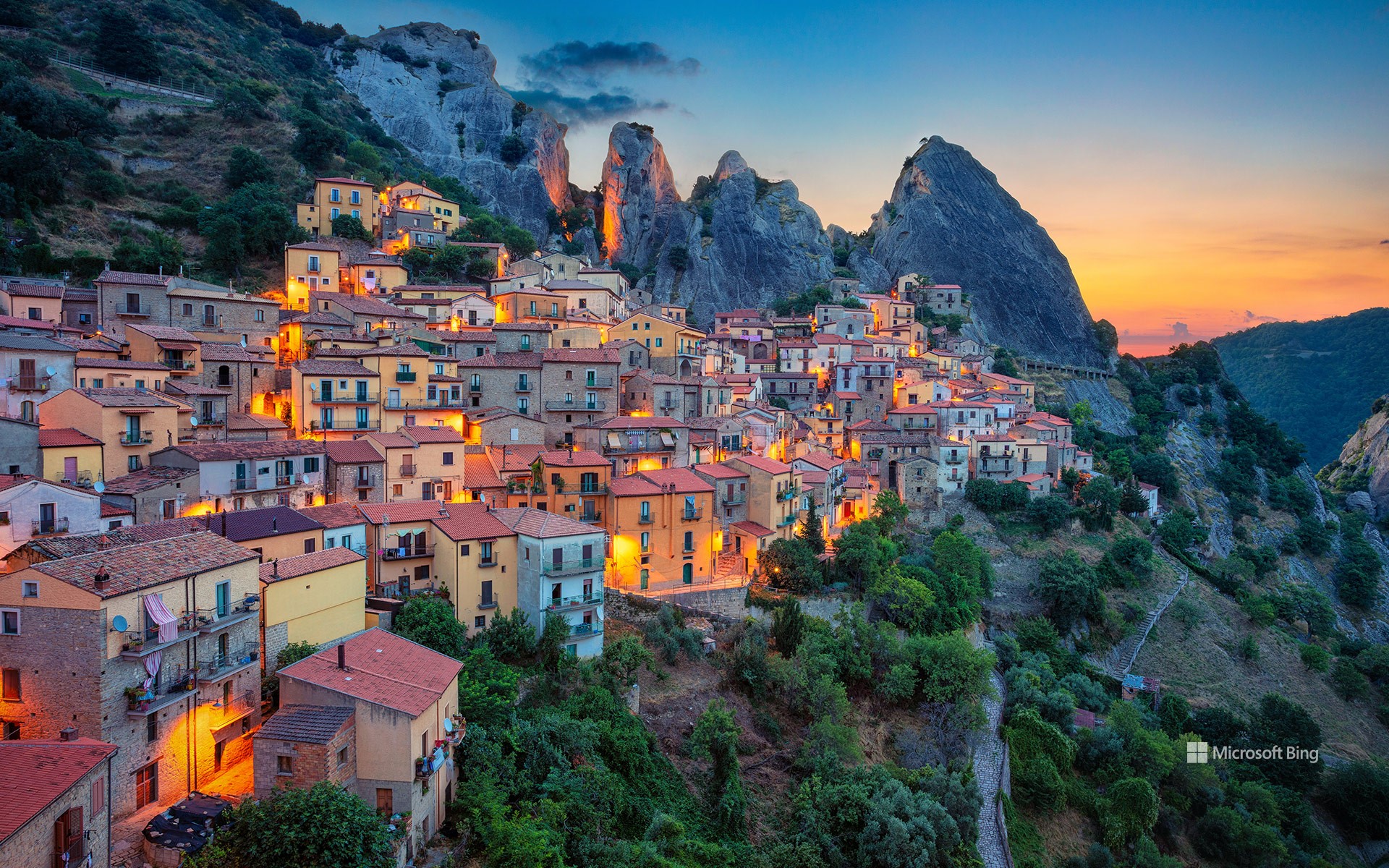
卡斯泰尔梅扎诺,意大利 Castelmezzano, Italy (© Rudy Balasko/Shutterstock)
明信片般完美的风景 A postcard-perfect landscape
卡斯泰尔梅扎诺,意大利
坐落在多洛米蒂山脉的崎岖峭壁上,意大利古老的村庄卡斯泰尔梅扎诺散发着迷人的魅力。这座村庄已被列为世界遗产,它历经过封建领主的统治和大大小小的战争,狭窄的小巷和古老的建筑里都有历史故事。据说,公元11世纪左右诺曼人定居于此,并建造了一座城堡,该村庄由此得名。此外,卡斯泰尔梅扎诺还有各种冒险活动,你可以来一次“天使飞行”,在山脉之间感受高空滑索。不过,感受这个小村庄的惬意的最佳方式,可能只需一杯咖啡:喝着咖啡看着太阳从雄伟的山峰后冉冉升起,与街灯一同照亮傍山而建的一排排房屋。
Castelmezzano, Italy
Embraced by the rugged peaks of the Lucanian Dolomites, the ancient village of Castelmezzano in southern Italy glows with charm. Its narrow alleys and cobblestone streets pass buildings that cling to the mountainside. This picturesque destination is brimming with history; from its rule by feudal lords to battles long forgotten. It's believed that the Normans settled here around the 11th century AD and constructed a castle, from which the village gets its name. Castelmezzano isn't just a sleepy portrait of the past, it also offers adventure activities for the brave, including a high-altitude zip line between mountains on the Volo dell'Angelo (Flight of the Angel). Yet the finest pleasure the small village offers might just be grabbing a cup of coffee and watching the sun rise behind the majestic mountain peaks, illuminating those huddled houses as the streetlamps go out.
